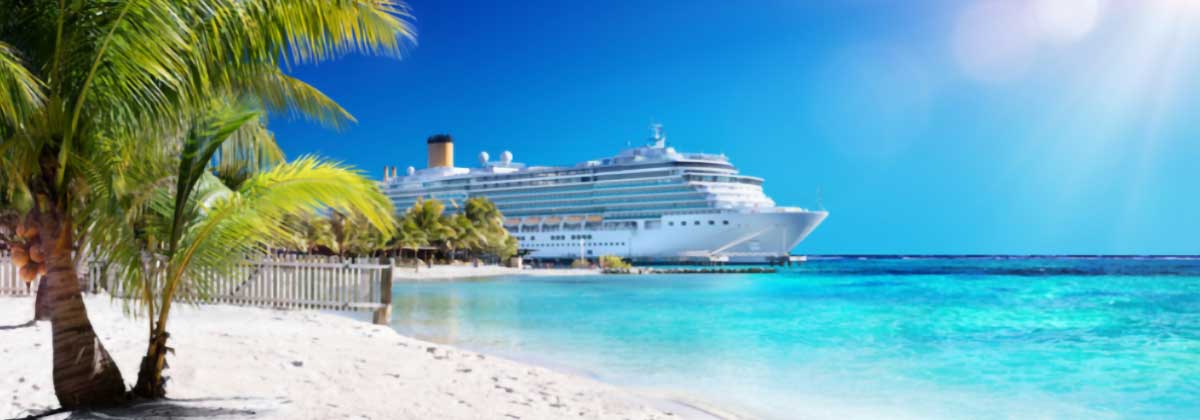Part one: Realizing the need and working to make it happen.
The reality of everyday life for any of us can wear us down over time regardless of how much we love our chosen occupations. Thankfully there are ways to completely disconnect from it all with a bit of forethought and planning.
What could I do and what’s it like to get away?
A cruise is one of the best opportunities to temporarily break that connection with the real world and clear your head. It begins once you are on board the ship—enjoying an adult beverage of choice—as you feel those massive engines down below cranking up. Soon you hear a blast of the ship’s air horns as it leaves the debarkation port.
In many cases you are looking over the ocean within an hour and soon lose sight of land. Eventually you notice your smartphone no longer has a signal—before you do the right thing and power it off for the next several days. But those devices could still come in handy. You and any travel companions can pretend it’s 1990 and use them like an old school 35mm film camera. Keep your primary focus on creating memories with each other—not killing time staring at your devices. There’s a beautiful world around you to take in—both on the ship and in the ports where you can enjoy some fun excursions!
Once you and yours retreat to your assigned cabin(s) for the night, you can take that disconnect to an even higher level by agreeing to leave the television off. Seriously, who would spend thousands of dollars on a vacation just to watch TV anyway? There is a lot of fun to be had just about anywhere on the ship itself and that cabin should only be used for sleeping and showering for the most part.
Note: While trucker-themed cruises may appeal to some—if you truly want a complete disconnect it’s best not to book a cruise with others in your line of work. An exception is if you have a significant other who drives team with you.
How can I plan for this?
Cruises are generally not something you can choose to do on the spur of the moment, especially if you plan to travel with family and/or friends.
First, do some research on destinations (ports of call) you want to see while the ship is docked. There are cruises that go to ports in the Eastern Caribbean, Western Caribbean, Hawaii and Alaska. Your destination will dictate the embarkation (home) port to board the ship. While researching different ports of call prior to booking you can also look at shore excursions and other things to do.
Deb and I have learned from our own experiences to plan a cruise about 12 months ahead of time. We decide when we want to go and then start looking online for cruise itineraries. Once we have zeroed in on the itinerary we want we will look at cabin options. There are several different types and prices of cabins (staterooms) to choose from. If you are traveling with family or friends and wish to get adjoining cabins with a door between them you should book as far in advance as possible to get what you want before someone else books them.
If you are sharing costs with others be sure they are committed. If they back out you may still be required to pay their fare. For instance, if you book a cabin for four people but end up with only two, the “per person” fare will go up and there may not be a less expensive cabin available at that point.
Do I need a passport?
A passport is strongly recommended. If an emergency requires a flight home out of a foreign port you will need a passport to gain entry back into the United States. It also makes the booking process and U.S. Customs clearance much easier when you disembark at the end of your cruise. I recommend going to a U.S. Post Office offering passport services at least 3-4 months ahead of time to avoid potential extra fees if you need to expedite the process.
How can I save up enough money to pay for it?
Most of us work hard to manage our finances while on the road—but we can take that break from reality to yet another level if we have plenty of money for “extras” on our hare-earned vacation. Just imagine having the extra cash for that hot stone massage on your first day at sea—you and your spouse could even do a ‘couples massage’ with two therapists helping both of you relax for a change!
A commitment to consistent saving is the key to reaching your goal. For example, by setting aside $50 per week for 100 weeks you’ll save $5,000—which should cover the fare for you and your significant other in most cases. If you are taking children and/or need to cover additional travel expenses to get to and from the port then be prepared to save a little longer. Avoid the temptation to put vacation expenses on a credit card unless you want to take advantage of any available travel benefits—and have the ability to pay it off before incurring interest charges.
We generally like to book a cruise that sails November 1 or later because of lower fares. Fares generally increase toward late February with the approach of busier vacation months.
One word of advice: NEVER talk openly about your vacation plans in detail on social media or anywhere else. None of us would want word of our home being vacant to fall on the wrong pair of ears and lead to a break-in.
In Part Two I will talk about some more essential planning to make this happen as the excitement continues to build!



